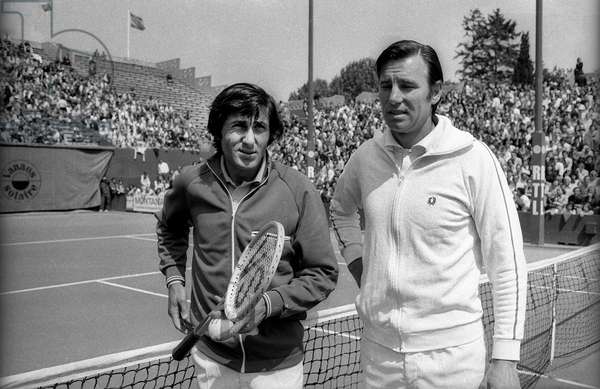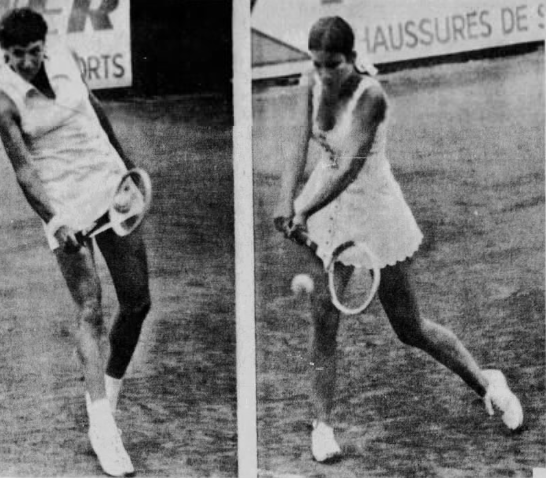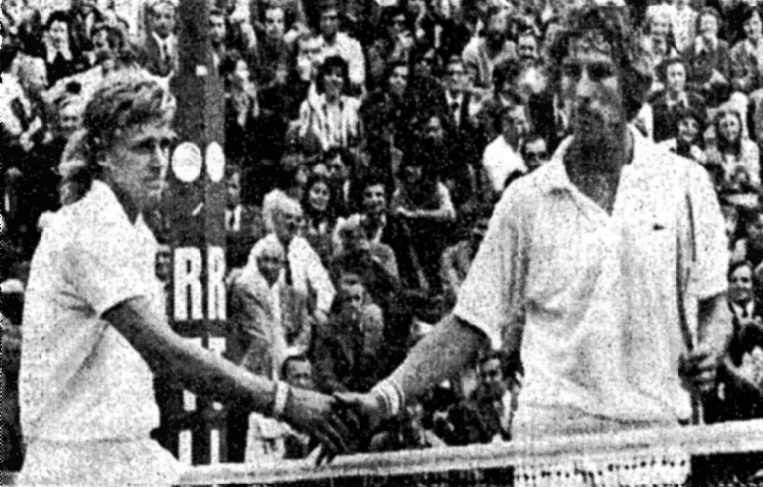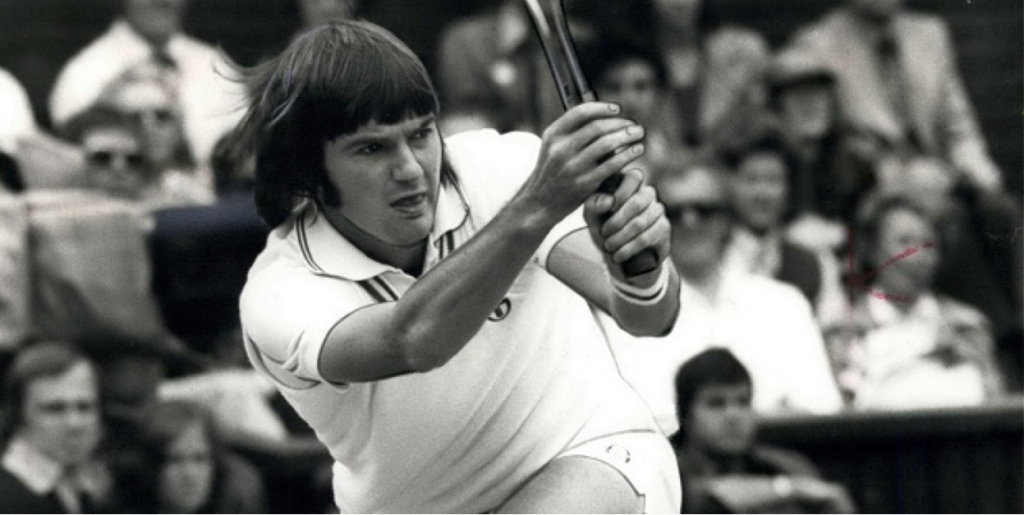Italian translation at settesei.it
In the last two weeks, Rafael Nadal recorded his 11th titles in both Monte Carlo and Barcelona. His career records at those two events, along with his ten Roland Garros championships, reflect a level of dominance never before seen on a single surface. They have to be considered among the greatest achievements in tennis history, and perhaps in all of sport.
The tennis fan in me is content to speculate about whether anyone will ever stop him. The analyst wants to dig deeper: Has Nadal’s performance at one of the tournaments been even better than the rest? How do these single-event records compare to other exploits, such as Roger Federer’s trophy haul at Wimbledon, or Bjorn Borg’s nearly-undefeated career at the French Open?
Barcelona by the numbers
Let’s start with Barcelona. Since 2005–we’ll ignore his 2003 appearance as a 16-year-old wild card–he has played the event 13 times, winning 11 of them. That’s a won-loss record of 57-2.
Usually, I would calculate the probability of a player winning so many tournaments in that many chances, then come up with a tiny percentage that would represent his odds of achieving such a feat. That would miss the mark here. Instead, I want to look at the problem from the opposite perspective: In order to win so many titles, how good must Nadal be?
We already know that Rafa is the best of all time on clay, in general. Using the Elo rating system, his peak surface-specific rating–that is, Elo calculated using only results on clay courts–is over 2,500, better than anyone else on clay … or anyone else on any surface. (Nadal’s current clay-specific Elo is around 2,400, and the closest things he has to rivals on the surface right now, Dominic Thiem and Kei Nishikori, sit at about 2,190 and 2,150. Stefanos Tsitsipas’s rating is 1865.) Since Rafa has posted his best results at these three events, it stands to reason that his tournament-specific levels are even higher.
Here, then, is the method we can use to figure that out. First, for each year he entered Barcelona, determine his path to the title. (For the 11 titles, that’s easy; for the other two, we use the players he would have faced had he kept winning.) Using each opponent’s clay court Elo rating at the time of the match, we can determine the odds that various hypothetical (and dominant) players would have progressed through the draw and won the title.
Here is Nadal’s path to the 2018 title, showing each player’s pre-match clay court Elo*, along with the odds that Rafa (given his own current rating) would beat him:
Round Opponent Opp Elo p(Rafa W)
R32 Roberto Carballes Baena 1767 97.3%
R16 Guillermo Garcia Lopez 1769 97.2%
QF Martin Klizan 1894 94.5%
SF David Goffin 2079 84.5%
F Stefanos Tsitsipas 1900 94.3%
* from this point on, the clay court Elos I use are 50/50 blends of clay-specific Elo–that is, a rating calculating only with clay court results–and overall Elo. The blended rating is the one that has proven best at predicting match outcomes. Nadal is the all-time leader in this category as well, with a 50/50 clay Elo that peaked around 2,510.
Given those five single-match probabilities, the odds that Nadal would win the tournament were just over 70%. That’s dominant, but it’s not 11-out-of-13 dominant.
What if Rafa were underrated by Elo, at least in Barcelona? Here is the probability that a player at various Elo ratings would have beaten the five opponents that he faced last week:
Clay Elo p(2018 Title)
2200 41.2%
2250 50.4%
2300 59.1%
2350 66.9%
2400 73.6%
2450 79.3%
2500 83.9%
2550 87.6%
2600 90.5%
It turns out that this year’s title path was one of the weakest since 2005. It is roughly equivalent to the players Nadal needed to defeat in 2006 (with Nicolas Almagro in the semis and Tommy Robredo in the final), and a bit tougher than last year’s route, which didn’t feature a top-50 player until Thiem in the final. The toughest was his hypothetical path in 2015, when he lost to Fabio Fognini in the second round. Had he progressed, he would have faced David Ferrer in the semis and Nishikori in the final.
Once we figure out the quality of Rafa’s opponents (and would-have-been opponents, for the two years he lost early), we can work out the odds that any player–given those paths–would have won the tournament each year.
If we assume that Rafa’s average level since 2005 is the same as his current level–a clay Elo of around 2,400–the odds that he would have won 11 Barcelona titles in 13 tries is 13.0%. We don’t have the luxury of replaying those 13 tournaments in a few thousand alternate universes, so it’s not entirely clear what to make of that number–was Rafa lucky? would he do it again, given the chance? is he actually way better than an Elo level of 2,400 in Barcelona?
I don’t know the answer to those questions; all we know is what happened. To compare (un)decimas (and related accomplishments by other players), we’re going to look at the Elo level that would have resulted in the achievement at least 50% of the time. In other words, how good would Nadal have to have been to give himself a 50/50 chance at winning 11 Barcelona titles in 13 tries?
At various clay Elo levels, here are the odds that Rafa would have completed the Barcelona undécima:
Clay Elo p(11 of 13)
2300 1.0%
2350 4.6%
2400 13.0%
2450 28.0%
2500 47.2%
2550 64.2%
2600 77.7%
2650 87.3%
2700 93.1%
Thus, a player with a clay Elo of about 2,505 would have had a 50% chance of matching Nadal’s feat at his home tournament. To put it another way: At this event, over a span of 14 years, he has played at a level roughly equal to his career peak which, incidentally, is the all-time best clay Elo rating ever achieved by an ATP player.
Comparing las (un)decimas
I hope that my method makes sense and seems like a reasonable way of quantifying a rare feat. Algorithm in hand, we can compare Nadal’s Barcelona record with his efforts in Monte Carlo and Paris.
Monte Carlo
Rafa has entered 14 times since 2005 (again, excluding his 2003 appearance) and won 11. That’s a bit less impressive than 11-of-13, but the competition level is much higher. Only last year’s tournament, in which the opposing finalist was Albert Ramos, is in the same league as most of the Barcelona draws.
Sure enough, the Monte Carlo undécima is lot more impressive. To have a 50% chance of winning 11 titles in 14 attempts, a player would need a clay Elo of about 2,595, almost 100 points higher than the comparable number for Barcelona, and well above the level any player has ever achieved, even at their peak.
Roland Garros
At the French Open, Nadal has entered 13 times, winning 10. The field is even more challenging than in Monte Carlo, but on the other hand, the five-set format gives a greater edge to favorites, lessening the chance of an underdog scoring an upset with two magical sets.
The Roland Garros 10-of-13 is not quite as eye-popping as the record at Monte Carlo. The clay Elo required to give a player a 50% chance of matching Nadal’s French Open feat is “only” around 2,570–still better than any player has ever attained, but a bit short of the comparable mark for Monte Carlo.
But wait … what about 2016? Rafa won two rounds and then withdrew from his third-rounder against Marcel Granollers. I don’t know whether that should count, but at least for argument’s sake, we should run the numbers without it, treating Nadal’s French Open record as 10 titles in 12 appearances, not 13. In that case, the clay Elo that would give a player a 50/50 shot at matching the record is 2,595–the same as the Monte Carlo number.
At the moment, Monte Carlo appears to be the tournament where Nadal has played his very best. With another French Open a few weeks away, though, that answer may be temporary.
Rafa vs other record holders
A few other players have racked up impressive totals at single events. Wikipedia has a convenient list, and a few accomplishments stand out: Federer’s tallies at Wimbledon, Basel, and Halle, Guillermo Vilas’s eight titles in Buenos Aires, and Borg’s six French Open titles in only eight appearances.
Let’s have a look at how they compare, ranked by the surface-specific Elo rating that would give a player a 50% chance of equaling the feat:
Player Tourney Wins Apps 50% Elo
Nadal Monte Carlo 11 14 2595
Nadal French Open* 10 12 2595
Nadal French Open 10 13 2570
Borg French Open** 6 7 2550
Nadal Barcelona 11 13 2505
Borg French Open 6 8 2475
Vilas Buenos Aires*** 8 10 2285
Federer Wimbledon 7 18 2285
Federer Halle 8 15 2205
Federer Basel 8 15 2180
* excluding 2016
** excluding 1973, when Borg was 16 years old, and lost in the fourth round
*** excluding 1969-71, both because Vilas was very young, and due to sketchy data
The only single-event achievement that ranks with Nadal’s is Borg’s record at Roland Garros–and even then, only when we don’t consider Borg’s loss there as a 16-year-old. Federer’s records in Wimbledon, Halle, and Basel are impressive, but fail to rate as highly because he has entered those tournaments so many times. Federer didn’t appear on tour ready to win everything on his chosen surface, the way Rafa did, and those early losses are part of the reason that his records at these tournaments are so low.
We never needed any numbers to know that Nadal’s accomplishments at his three favorite tournaments are among the best of all time. With these results, though, we can see just how dominant he has been, and how few achievements in tennis history can even compare. The scary thing: A month from now, I may need to come back and update this post with even more eye-popping numbers. The greatest show on clay courts isn’t over yet.




